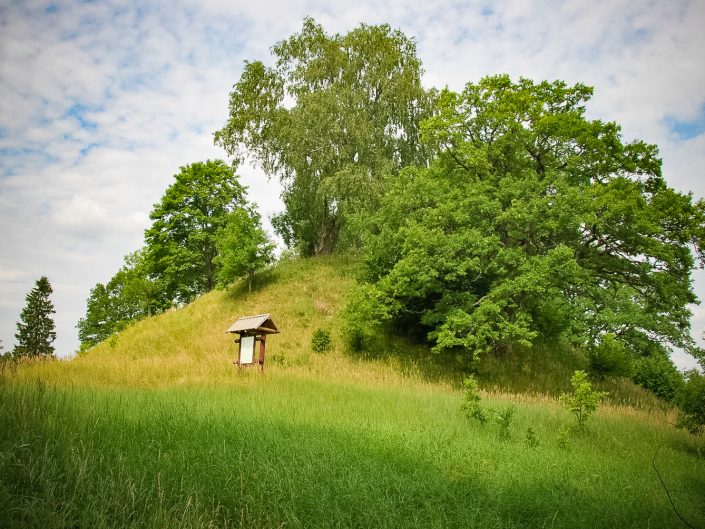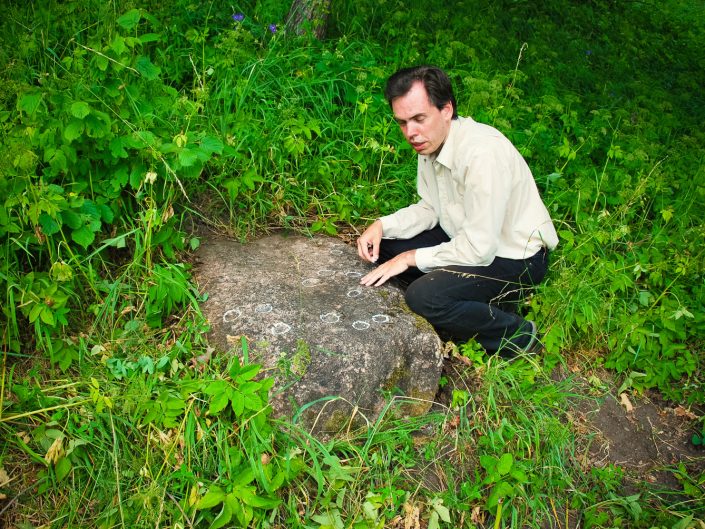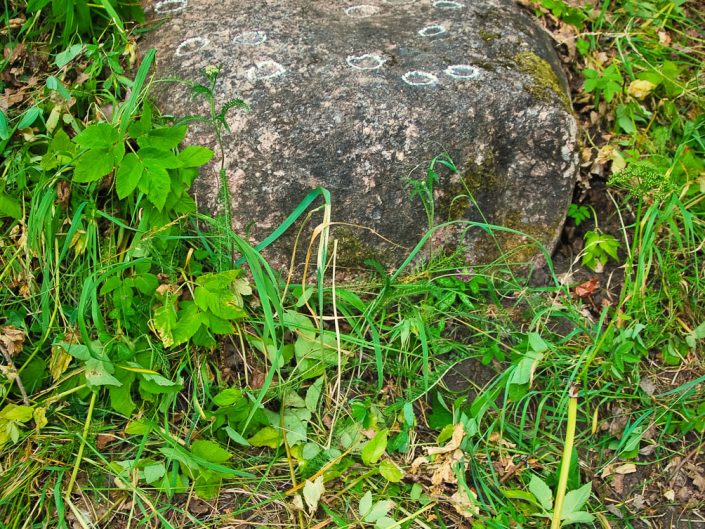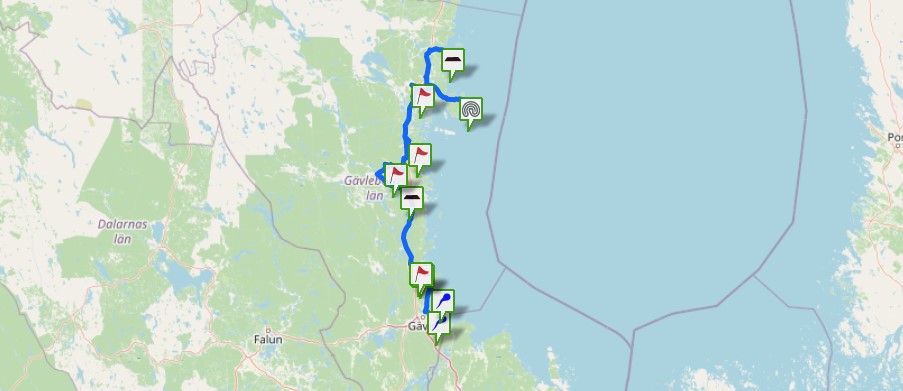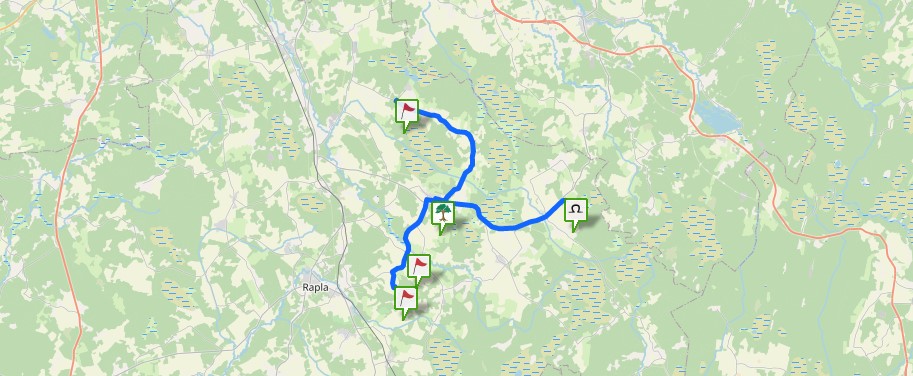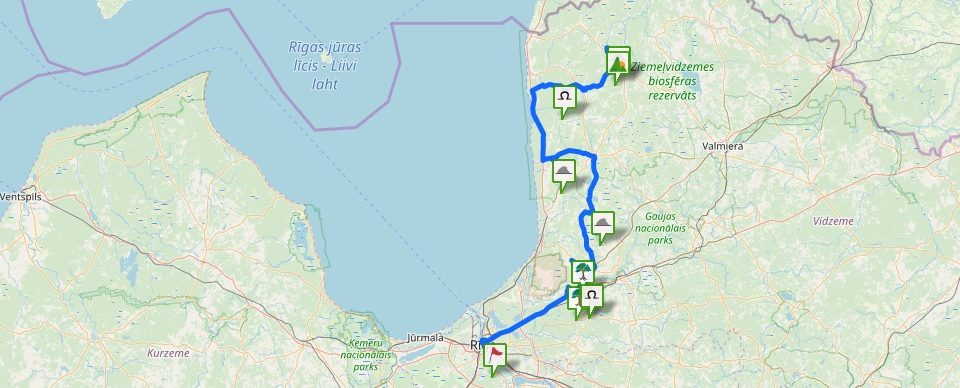A typical ancient cult stone — a cup-marked stone that is located in its historical place. The size of the stone: length of 1.10 m, width of 0.90 m, height of 0.30 m, circumference of 3.10 m. There are 14 scarcely distinguishable cup marks of 4–6.5 cm in diameter and 0.2–1.4 cm in depth. When looking at the stone’s cup marks casually, due to their small size one can even not notice them. Red large crystal granite.
The cup-marked stone is important as an object located in its original place, where it has been situated for thousands years already. The stone is located 7 m of the edge of the ancient rampart. It is significant as a cult site corresponding to a hill fort, located almost in the hill fort — at it slope. Recently the hill fort and the nearby ancient burial ground are being archaeologically studied (excavation works are performed under the leadership of Professor Andrejs Vasks) to find out about the lifestyle of the ancient people in the nowadays abandoned area where there used to be an important county centre.
When visiting the cup-marked stone, one should by all means see the whole ancient site complex starting from the exceptionally picturesque hill fort and ending with the Idols’ Hill on the other side of the highway. The cup-marked stone is located in the protected area of the hill fort. The Mežīte Hill Fort had been constructed on a solitary, about 13 m high hill, the slopes of which had been artificially made steeper. Its plateau is of a triangular form, 55 x 30–50 m large, with a narrower southern part, on which a 3 meters high rampart had been heaped up. It used to protect the ascent to the hill fort, which, just like in many other Latvian hill forts, had been planned in such a way that when invaders were striving to conquer the hill fort itself, their shoulders, unprotected by a shield, would be turned against the hill fort’s defenders. On the opposite side of the ascent (southeast of the hill fort) a smaller hillock is situated, the so-called small hill fort. According to its location, there could be some additional fortifications located for the defence of the ascent to the hill fort. All around the hill fort, in the area of almost three hectares, there used to be a settlement place, where the cultural layer sometimes reaches the depth of around 1 m. When examining this settlement place at different times, several artefacts were found (a twisted bronze bracelet, a bronze ring, an iron axe, the end of an iron bow arrow) and pieces of crockery. Not far from the hill fort two burial ground sites are known – in the so-called Kapurkalns, the artefacts typical to the Kurshi of the Late Iron Age were found, but in the ground of the Kalnenieki homestead, in a gravel hillock, inhumation graves of the same period typical to the Baltic Finns were established. There was a hypothesis made that in the Mežīte Hill Fort the “Castellatura Lodgiae” mentioned in some document dating back to 1234 about enfeoffing of 25 acres of land to the Riga St.Peter’s Church was situated.
